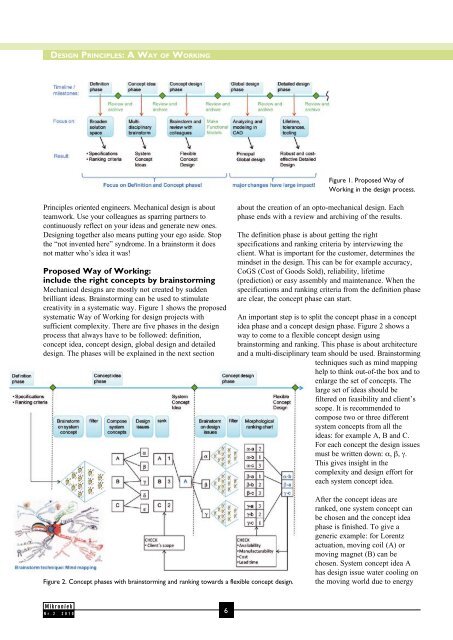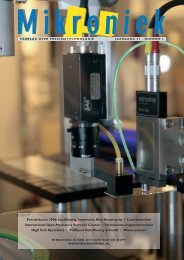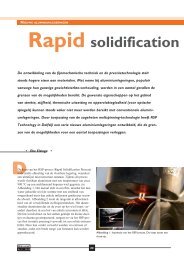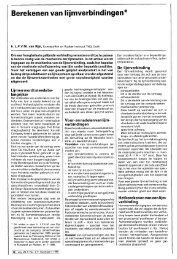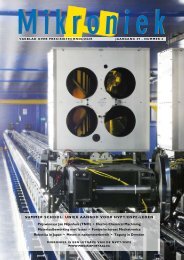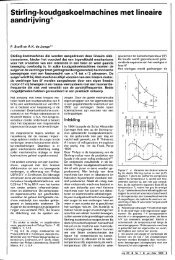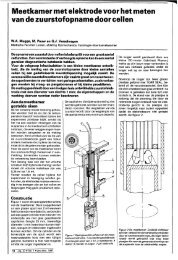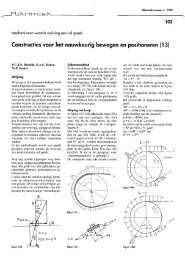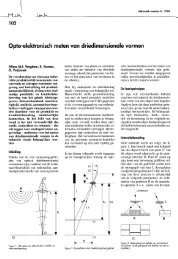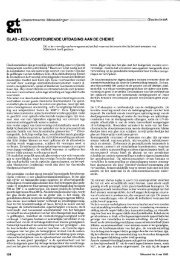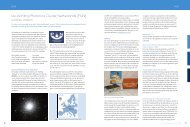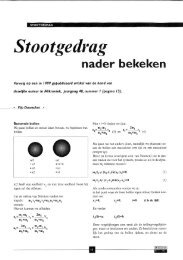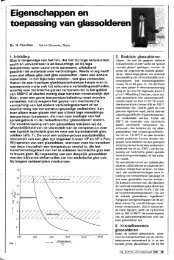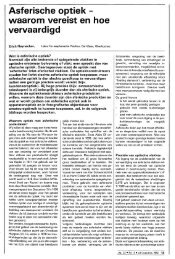Design Principles - DSPE
Design Principles - DSPE
Design Principles - DSPE
You also want an ePaper? Increase the reach of your titles
YUMPU automatically turns print PDFs into web optimized ePapers that Google loves.
De s i g n PrinciPles: A WA y o f Wo r k i n g<br />
<strong>Principles</strong> oriented engineers. Mechanical design is about<br />
teamwork. Use your colleagues as sparring partners to<br />
continuously reflect on your ideas and generate new ones.<br />
<strong>Design</strong>ing together also means putting your ego aside. Stop<br />
the “not invented here” syndrome. In a brainstorm it does<br />
not matter who’s idea it was!<br />
Proposed Way of Working:<br />
include the right concepts by brainstorming<br />
Mechanical designs are mostly not created by sudden<br />
brilliant ideas. Brainstorming can be used to stimulate<br />
creativity in a systematic way. Figure 1 shows the proposed<br />
systematic Way of Working for design projects with<br />
sufficient complexity. There are five phases in the design<br />
process that always have to be followed: definition,<br />
concept idea, concept design, global design and detailed<br />
design. The phases will be explained in the next section<br />
Figure 2. Concept phases with brainstorming and ranking towards a flexible concept design.<br />
Nr.2 2010<br />
6<br />
Figure 1. Proposed Way of<br />
Working in the design process.<br />
about the creation of an opto-mechanical design. Each<br />
phase ends with a review and archiving of the results.<br />
The definition phase is about getting the right<br />
specifications and ranking criteria by interviewing the<br />
client. What is important for the customer, determines the<br />
mindset in the design. This can be for example accuracy,<br />
CoGS (Cost of Goods Sold), reliability, lifetime<br />
(prediction) or easy assembly and maintenance. When the<br />
specifications and ranking criteria from the definition phase<br />
are clear, the concept phase can start.<br />
An important step is to split the concept phase in a concept<br />
idea phase and a concept design phase. Figure 2 shows a<br />
way to come to a flexible concept design using<br />
brainstorming and ranking. This phase is about architecture<br />
and a multi-disciplinary team should be used. Brainstorming<br />
techniques such as mind mapping<br />
help to think out-of-the box and to<br />
enlarge the set of concepts. The<br />
large set of ideas should be<br />
filtered on feasibility and client’s<br />
scope. It is recommended to<br />
compose two or three different<br />
system concepts from all the<br />
ideas: for example A, B and C.<br />
For each concept the design issues<br />
must be written down: α, β, γ.<br />
This gives insight in the<br />
complexity and design effort for<br />
each system concept idea.<br />
After the concept ideas are<br />
ranked, one system concept can<br />
be chosen and the concept idea<br />
phase is finished. To give a<br />
generic example: for Lorentz<br />
actuation, moving coil (A) or<br />
moving magnet (B) can be<br />
chosen. System concept idea A<br />
has design issue water cooling on<br />
the moving world due to energy


